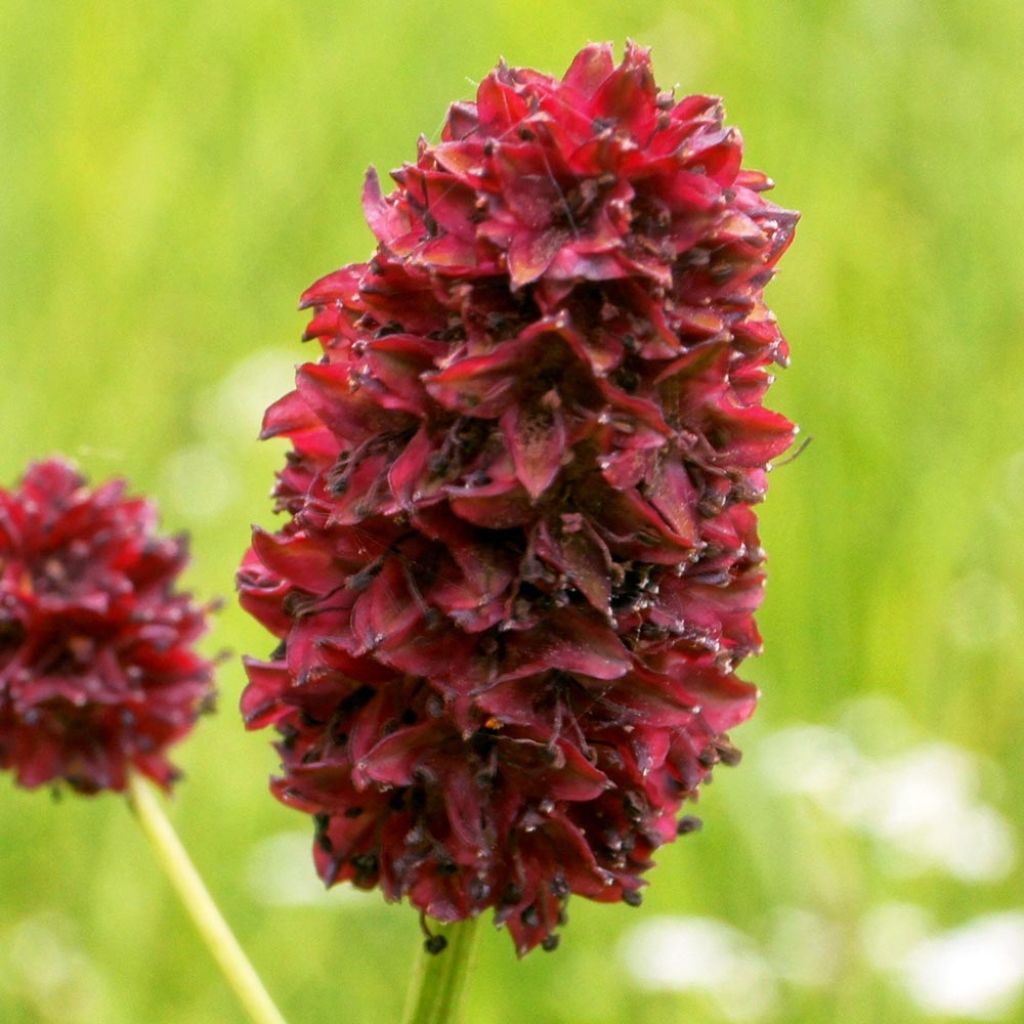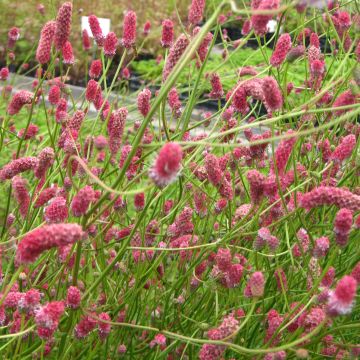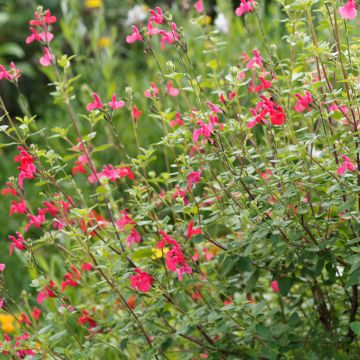

Sanguisorba Little Angel


Sanguisorba Little Angel


Sanguisorba Little Angel
Sanguisorba Little Angel
Sanguisorba Little Angel
Great Burnet, Salad Burnet
2 buckets planted last spring. 2 very nice young plants all summer, with their foliage and flowers. I can't wait to see them come back in the spring!
Karine, 07/02/2021
Special offer!
Receive a €20 voucher for any order over €90 (excluding delivery costs, credit notes, and plastic-free options)!
1- Add your favorite plants to your cart.
2- Once you have reached €90, confirm your order (you can even choose the delivery date!).
3- As soon as your order is shipped, you will receive an email containing your voucher code, valid for 3 months (90 days).
Your voucher is unique and can only be used once, for any order with a minimum value of €20, excluding delivery costs.
Can be combined with other current offers, non-divisible and non-refundable.
Home or relay delivery (depending on size and destination)
Schedule delivery date,
and select date in basket
This plant carries a 12 months recovery warranty
More information
We guarantee the quality of our plants for a full growing cycle, and will replace at our expense any plant that fails to recover under normal climatic and planting conditions.
Would this plant suit my garden?
Set up your Plantfit profile →
Description
The Sanguisorba 'Little Angel' is a recent variety of burnet, released in 2016, absolutely delightful, with variegated cream foliage topped with a multitude of short upright spike-shaped raspberry-red brushes, swaying in the slightest breeze. This robust perennial blooms from July to September, above an elegant cut and serrated foliage, dark green with cream margins. This generous summer flowering fades to a white-silver and then beige colour that blends beautifully with wildflowers and grass root hairs. The beautiful stump develops year after year, and proves to be perfectly hardy, even in heavy, waterlogged soils in winter. The Common Burnet grows in ordinary soil even if it appreciates fresh to moist areas like water edges. It will bring a natural and romantic touch to sunny flowerbeds.
The cultivar 'Little Angel' was recently introduced in Europe by Dutch horticulturists Luc Klinkhamer and M. Chang from the Osco Gardens, who spotted it in 2009 in a Japanese nursery in Aomori Prefecture. It originates from Sanguisorba officinalis var. microcephala, but now bears the name Sanguisorba 'Little Angel'. The Sanguisorba officinalis is a medicinal botanical species, which can be found widespread across areas of the temperate northern hemisphere. This plant belongs to the large Rosaceae family. It is a herbaceous and rhizomatous perennial plant, non-invasive, developing from a vigorous stump. The foliage emerges in spring and disappears in winter. The faded inflorescences remain decorative for a long time. This flowering, smaller in the microcephala form, clearly overtops a very finely cut fresh green foliage. The basal leaves, 20 to 30 cm (8 to 12in) long, are divided into 7 to 25 leaflets, oblong, elliptical, and regularly dentate. The stem leaves, smaller and erect, are often tinged with red.
In good fresh and fertile soil, the 'Little Angel' burnet forms a clump 40 cm (16in) tall and 25 cm (10in) wide, with rapid growth. It spreads slowly to form a beautiful variegated foliage carpet up to 40 cm in diameter. From July to September, more or less early depending on the climate, the floral stems emerge from the foliage, carrying compact ovoid heads, 1.5 cm (1in) long. They are adorned with tiny raspberry-red flowers packed tightly together. The inflorescences fade almost to white before browning. This flowering clearly overtops a very finely cut foliage with a dark green bordered with white colouration that is stable.
The 'Little Angel' burnet, with its compact habit, is placed at the front of flowerbeds or as an edging. The plant forms 10 cm (4in) high rosettes that nicely cover the ground or gracefully cascade if planted in a hanging basket. It is a variety very easy to grow in ordinary soil that is rather fresh, even limestone and clay. This plant thrives in classic flowerbeds as well as at the water's edge. It has the advantage of being highly frost-resistant, which allows it to be adopted in almost all regions. For a beautiful wild and refined effect, it can be planted en masse, combined with Miscanthus sinensis var. condensatus 'Cosmopolitan' or Pennisetum orientale 'Karley Rose'. It will accompany, with lightness, other very beautiful foliage plants, such as Anaphalis triplinervis, Alchemilla mollis, or the tall Angelica gigas. Its foliage with a delightful cucumber aroma can also enhance composed salads.
Report an error about the product description
Sanguisorba Little Angel in pictures






Flowering
Foliage
Plant habit
Botanical data
Sanguisorba
Little Angel
Rosaceae
Great Burnet, Salad Burnet
Cultivar or hybrid
Other Sanguisorba
View all →Planting and care
The Sanguisorba 'Little Angel' prefers always moist, even waterlogged, humus-rich, clayey, loamy soils, and a sunny exposure. This lovely perennial plant, native to cold regions, likes a fresh and rich soil. Easy to grow in such conditions, it easily naturalizes in the garden through its rootstock and spontaneous sowings (not always true to the parent plant). Its faded flowers remain decorative for a long time throughout winter: prune the clump before the start of vegetation, in spring.
Planting period
Intended location
Care
-
, onOrder confirmed
Reply from on Promesse de fleurs
Similar products
Haven't found what you were looking for?
Hardiness is the lowest winter temperature a plant can endure without suffering serious damage or even dying. However, hardiness is affected by location (a sheltered area, such as a patio), protection (winter cover) and soil type (hardiness is improved by well-drained soil).

Photo Sharing Terms & Conditions
In order to encourage gardeners to interact and share their experiences, Promesse de fleurs offers various media enabling content to be uploaded onto its Site - in particular via the ‘Photo sharing’ module.
The User agrees to refrain from:
- Posting any content that is illegal, prejudicial, insulting, racist, inciteful to hatred, revisionist, contrary to public decency, that infringes on privacy or on the privacy rights of third parties, in particular the publicity rights of persons and goods, intellectual property rights, or the right to privacy.
- Submitting content on behalf of a third party;
- Impersonate the identity of a third party and/or publish any personal information about a third party;
In general, the User undertakes to refrain from any unethical behaviour.
All Content (in particular text, comments, files, images, photos, videos, creative works, etc.), which may be subject to property or intellectual property rights, image or other private rights, shall remain the property of the User, subject to the limited rights granted by the terms of the licence granted by Promesse de fleurs as stated below. Users are at liberty to publish or not to publish such Content on the Site, notably via the ‘Photo Sharing’ facility, and accept that this Content shall be made public and freely accessible, notably on the Internet.
Users further acknowledge, undertake to have ,and guarantee that they hold all necessary rights and permissions to publish such material on the Site, in particular with regard to the legislation in force pertaining to any privacy, property, intellectual property, image, or contractual rights, or rights of any other nature. By publishing such Content on the Site, Users acknowledge accepting full liability as publishers of the Content within the meaning of the law, and grant Promesse de fleurs, free of charge, an inclusive, worldwide licence for the said Content for the entire duration of its publication, including all reproduction, representation, up/downloading, displaying, performing, transmission, and storage rights.
Users also grant permission for their name to be linked to the Content and accept that this link may not always be made available.
By engaging in posting material, Users consent to their Content becoming automatically accessible on the Internet, in particular on other sites and/or blogs and/or web pages of the Promesse de fleurs site, including in particular social pages and the Promesse de fleurs catalogue.
Users may secure the removal of entrusted content free of charge by issuing a simple request via our contact form.
The flowering period indicated on our website applies to countries and regions located in USDA zone 8 (France, the United Kingdom, Ireland, the Netherlands, etc.)
It will vary according to where you live:
- In zones 9 to 10 (Italy, Spain, Greece, etc.), flowering will occur about 2 to 4 weeks earlier.
- In zones 6 to 7 (Germany, Poland, Slovenia, and lower mountainous regions), flowering will be delayed by 2 to 3 weeks.
- In zone 5 (Central Europe, Scandinavia), blooming will be delayed by 3 to 5 weeks.
In temperate climates, pruning of spring-flowering shrubs (forsythia, spireas, etc.) should be done just after flowering.
Pruning of summer-flowering shrubs (Indian Lilac, Perovskia, etc.) can be done in winter or spring.
In cold regions as well as with frost-sensitive plants, avoid pruning too early when severe frosts may still occur.
The planting period indicated on our website applies to countries and regions located in USDA zone 8 (France, United Kingdom, Ireland, Netherlands).
It will vary according to where you live:
- In Mediterranean zones (Marseille, Madrid, Milan, etc.), autumn and winter are the best planting periods.
- In continental zones (Strasbourg, Munich, Vienna, etc.), delay planting by 2 to 3 weeks in spring and bring it forward by 2 to 4 weeks in autumn.
- In mountainous regions (the Alps, Pyrenees, Carpathians, etc.), it is best to plant in late spring (May-June) or late summer (August-September).
The harvesting period indicated on our website applies to countries and regions in USDA zone 8 (France, England, Ireland, the Netherlands).
In colder areas (Scandinavia, Poland, Austria...) fruit and vegetable harvests are likely to be delayed by 3-4 weeks.
In warmer areas (Italy, Spain, Greece, etc.), harvesting will probably take place earlier, depending on weather conditions.
The sowing periods indicated on our website apply to countries and regions within USDA Zone 8 (France, UK, Ireland, Netherlands).
In colder areas (Scandinavia, Poland, Austria...), delay any outdoor sowing by 3-4 weeks, or sow under glass.
In warmer climes (Italy, Spain, Greece, etc.), bring outdoor sowing forward by a few weeks.



















































